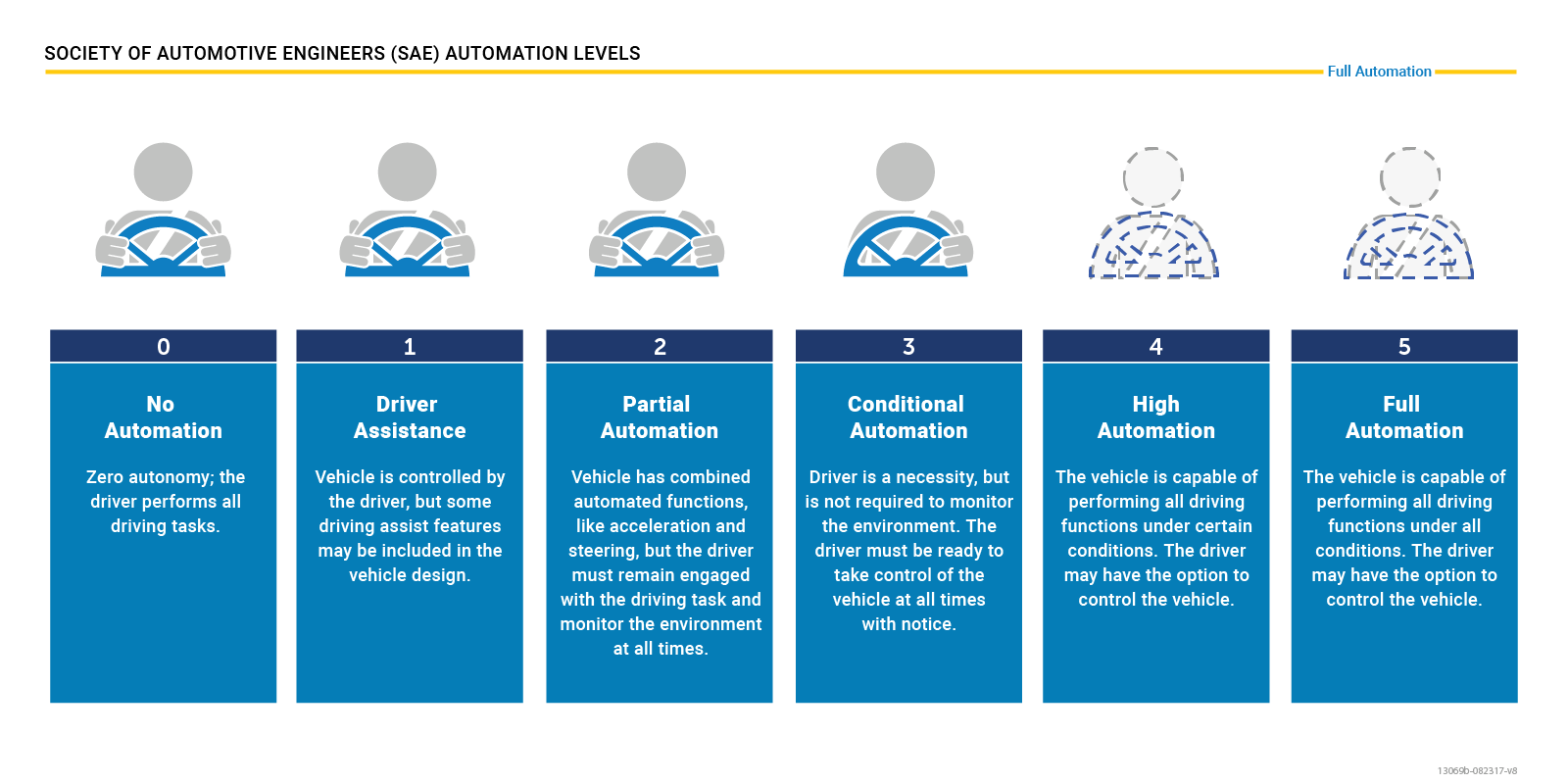STAC Final: Self-Driving Cars
Self-driving cars are the future of transportation, with many different companies testing their current models, and others, such as Tesla, are already implementing many features of self-driving cars into the market with their latest models.
Self-driving cars, also referred to as autonomous vehicles, are vehicles that do not need a person behind the wheel to drive them. Through the use of artificial intelligence, a variety of sensors, and pre-programmed responses to scenarios, these cars are able to navigate the road just as well as, and even potentially better than, most humans.
There are, however, different stages and levels of autonomy in these vehicles, ranging from driver assistance to full autonomy as shown in the graphic below. From driver assistance through conditional automation, a driver is required with varying degrees of control, but once high and full automation are available, drivers will be unnecessary for the vehicle’s success (Society of Automotive Engineers (SAE) Automation Levels). Currently, only conditional automation is available to the public, with many Tesla models being the prime example of this technology, but high and full automation are constantly being worked on by a number of tech giants such as Google’s Waymo, Apple, and Tesla themselves.

Image from https://www.nhtsa.gov/technology-innovation/automated-vehicles-safety
The move towards this automated future, however, remains highly controversial for a variety of reasons spanning many disciplines. To ensure that autonomous vehicles are implemented in the most ideal way, it is important to practice, in the terms of Isabelle Stengers, “slow science,” thus exploring all of the possible angles and disciplines that may affect or contribute to the production and implementation of this new technology (Stengers). These concerns are primarily environmental, ethical, and economic concerns about how self-driving cars will be implemented into society and the potential effects that they may have.